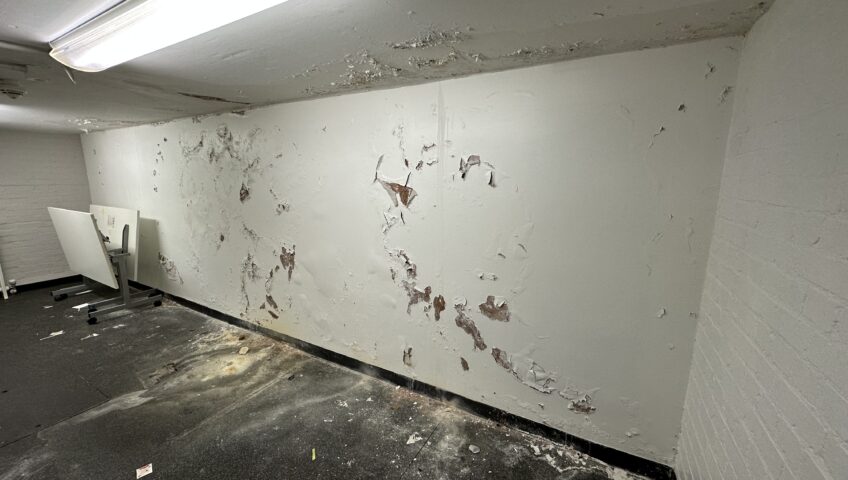
Preventing Mould and Mildew with Proper Basement Waterproofing Techniques
Adding a basement is a great way to expand living spaces, and it’s a more favoured approach in London than traditional extensions. According to the Urban Geography journal, more than 7,000 London basement excavations were approved between 2008 and 2018. Although they’re becoming more common, basements are more susceptible to water ingress than any other location, which can lead to mould and mildew growth. And looking and smelling unpleasant, mould and mildew cause structural damage and health issues. To prevent mould and mildew, proper waterproofing techniques must be applied to all basements.
UK Waterproofing Regulations
Given the rising popularity of basement excavations, the British Standards for ‘protection of below-ground structures against water’ were updated in 2022. These changes don’t only apply to newly built basements, they apply to existing underground structures, which is why all basement owners need to be familiar with them.
The leading regulation on waterproofing basements is the British Standard 8102:2022, which identifies and accounts for risks from wider sources of water. The updated BS 8102:2022 offers recommendations for waterproof construction, risk assessments for groundwaters, drainage options, and barrier materials.
The biggest regulatory change is the scope. Before 2022, BS 8102 primarily focused its attention on groundwater ingress, but now it takes into account all forms of ingress. Additionally, it explores standards for structures like podium decks, tunnels, and buried roofs.
The BS 8102:2022 not only offers information on various waterproofing techniques – it defines new standards for basement gas membrane testing and fire safety.
Tanking the Basement
The UK experiences around 853 mm of rainfall every single year, and it’s expected to increase alongside global warming and shifts in weather patterns. Without sufficient basement waterproofing, a lot of this rain will penetrate the ground and make it into your home, which will lead to mould and mildew.
One of the most common techniques to waterproof a basement is tanking, which is the application of a waterproof barrier on the walls. Tanking slurry, which is also known as “cementitious tanking”, is a thick substance that’s rolled onto masonry as a defence against penetrative damp. After application and drying, the coating can be plaster-covered and painted.
There are many different basement tanking methods, but we’re only going to focus on the two most popular: dry system (waterproof membrane) and wet system (tank coating).
Dry System – Cavity Drain Membrane
The dry system – also referred to as the mechanical system – uses a dimpled or studded plastic sheet that’s fixed into the masonry or rendered walls. Once in place, it’s sealed inside to prevent water from entering the basement. This type of waterproofing is best in properties where there’s a lot of dampness or for new excavations, which are both common in London.
When the membrane has been installed, it’s safe to cover with plaster or plasterboard, which creates a smooth surface for painting and decorating.
To make sure the waterproofing lasts, it’s important to follow the correct technique. Our team of experts have years of experience with damp-proofing properties, which allows us to survey and conduct remedial work to prevent unwanted dampness.
Wet System – Tanking Coating
The wet system is the most straightforward waterproofing technique, but it’s only effective for existing basements without signs of dampness.
Before applying the tanking solution, the entire wall needs to be cleared of any damaged plaster, debris, dust, wallpaper, or paint, and then a layer of salt neutraliser can be applied. The next step is to inspect the wall and fill any cracks or holes.
Now the surface has been prepared, you can apply a base layer of tanking solution (asphalt, tar/resin, slurry, or bitumen). When the first coat is 100% dry, a second coating will be needed to make the basement watertight. Only after the final coat has finished drying is it safe to apply plaster.
Waterproof Concrete Additives
During basement excavations, there is an additional waterproofing technique that involves mixing waterproofing additives into the concrete. Even though the concrete will be waterproof by nature, the joints of the basement tend to be weak, meaning water penetration can still occur. To reduce the risk, this type of waterproofing is combined with a dry or wet system approach.
Install Pipe Insulation
Pipes running through your basement are an obvious source of potential water leakage, especially if the pipes are carrying cold water because they’re susceptible to condensation. To avoid damaging your walls and floors, we recommend insulating your cold water pipes. Additionally, you can install vinyl plank flooring, which is an excellent way of avoiding floor surface damage if an underground pipe bursts.
Add or Repair Downspouts and Gutters
If downspouts and gutters are damaged or non-existent, water being driven away from your property will simply pour along the side of the foundations. The consequences of this can be devastating and may cost you a fortune. For the sake of a cheap repair, you can avoid paying thousands in foundation repair costs. And being in good working order, it’s important to clear blocks from gutters regularly, as this will lead to overflowing and dampness.
Subsidence
Subsidence is where the structure of a property moves over time, which can affect a basement conversion. Cracks will affect the tanking and could lead to leaks. Cracks in a basement wall are much harder to access because of the surrounding soil. To avoid the time-consuming and costly job of re-excavation, a series of epoxy or polyurethane injections can be applied from the inside of the basement.
This technique will only work on small cracks and it won’t be a permanent fix. However, it will give you more time to investigate the cause and solve any issues.
Retroactively repairing damage caused by mould and mildew is expensive and time-consuming, which is why preventative basement waterproofing techniques are the best approach.
By following the basement waterproofing techniques outlined above and adhering to insights offered by the BS 8102:2022 standards, a basement living space can be enjoyed for many years to come.

